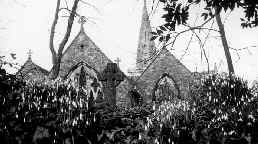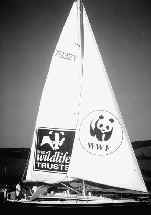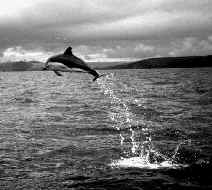




Our conservation programmes involve co-operation between staff, volunteers and organisations across a variety of specialist areas. Perhaps you would like to add your support to a project that particularly matches your interests?
Photographic Group
We are very fortunate to have a group that specialises in natural history photography in this county. The group was formed by a strong nucleus of keen photographers, many of whom are still a driving force behind the scenes today. This includes Norman and Margaret Froggatt, David and Margaret Griffith, Howard and Norma Miles, Jacqui and Frank Hollinshead, Stewart Clark, Miss Wood, Alan Griffiths and Raymond Dennis. It is the strength of these members which has kept the group together through thick and thin. Their knowledge of their respective specialist subjects is an inspiration to us relative newcomers!
Having written that list of names I have become even more aware that many of our more accomplished photographers do it in pairs! This shouldn't come as a surprise since our hobby is one that takes up a lot of our time and if our partners didn't become involved in one way or another then we wouldn't see much of each other - just ask Alan!
We have been through a thin time recently, with our active membership decreasing in proportion to the size of the meeting room at Allet. However, as we approach the new millennium I am optimistic. We have recently attracted several new members who are interested in natural history and are very competent photographers. This increase in interest can be traced directly back to the exhibition and workshops which we organised in the spring. It is important for us to continue this trend by maintaining our new higher-profile activities over the next few years. Ideas to me ....
David Chapman
Anyone interested in seeing or obtaining wildlife images can visit David's web site: http://www.ruralimages.freeserve.co.uk
Seaquest South-West
In its very earliest stages, Seaquest was a lonely hearts club under whose banner a tiny collection of people from Cornwall and Devon who had worked for several years studying marine animals drew together to offer some small support to one another.
Stage two happened because of the simple recognition that it is impossible to track highly mobile marine animals and to learn anything meaningful about such movements alone. One pair of eyes is utterly not enough. The public launch of Seaquest and its abidingly most important feature, the network of Coastal Rangers, recognised this. It opened up the adventure of observation and discovery to all. Since that time, we have received a tremendous number of sightings from you, describing whales, various species of dolphin, seals, ocean sunfish, turtles and, of course, the great basking shark migration inshore that has allowed Colin Speedie to track their movements around the Cornish coast between March and September. It has also helped us discover just how many marine animals are stranded on our beaches through the year but especially in the winter months.
Coastal Rangers represent all walks of life. Calls have come in from lifeguards, surfers, harbour officers, fishermen, schoolchildren, divers, yachtsmen and a wondrous variety of other individuals, local and on holiday. Please keep the sightings coming in; their importance is absolute, and without it everything that we are trying to do is diminished. As for the sightings that you have been sending in, these are always open for you to examine - on the Cornwall Wildlife Trust web site, for example.
Now and in the future our various studies will continue, and progress and results will be reported in the Trust magazine. Meanwhile, we will be working as much as you desire in your communities, in schools and with special interest groups. Tell us what you want from us and we will try to come up with the goods. Right now, we can offer you a slide show, video footage and standing exhibitions of enlarged photographs and text.
We are seeking funding to produce notes for teachers and pupils which bring current work that we are doing, or observations being made by local people, into the classroom and the curriculum, offering an extra dimension of interest to the pupils in school work as well as providing the basis for an informed, lifelong interest in the marine and maritime environment in Cornwall.
Stephen Westcott
Seal Group
In the nine years of its existence, the Seal Group has identified many previously undocumented details of grey seal life in the West Country. These include identifying all sites used for hauling out, all breeding and moulting sites, the timing of the breeding season, annual pup production and mortality rates, as well as the identification of a number of individuals using photo-identification techniques.
Attention has been drawn to the extent to which white-coated -suckling - pups are affected by oil contamination on nursery beaches, and to the number of seals wearing shawls or bands of fishing net around their necks. We have also been keeping track of the winter strandings of dead seals, when mortalities appear to peak.
Currently, we are continuing the programme of photo-identification, in close collaboration with the Breton, Welsh and Irish seal researchers. We monitor trends in pup production and mortality. In collaboration with different universities, we are measuring disturbance of seals by pleasure craft and by walkers, while also running a comparison of the cost and value of seals to the Cornish economy.
However, the most important work at the moment is being carried out in collaboration with the Cornish Fish Producers' Organisation, the Cornwall Sea Fisheries Committee and the RSPCA. Part-funded by English Nature, we are aiming to describe the extent to which seals are damaging fish in nets in Cornish waters and to identify "hot spots". At the same time, we are trying to discover how many seals are being caught in nets, as 1998 figures suggest more seals are being so caught than are being born at Cornish sites. As most seals caught were described as being very young, aided by RSPCA vets we hope to glue hat tags to the heads of a sample of locally born seals to discover whether it is local seals or seals from elsewhere that are being captured.
In the future, we will continue to identify and track individuals, to learn secrets which surely await discovery, such as the extent to which local seals migrate or visit the neighbours and their fidelity to sites and to one another. As ever, I appeal for your help in this: I would like to build a small, committed team to find out all those things which are beyond my power, as an individual, to encompass.
Stephen Westcott
Cornwall's Living Churchyards
Although strongly backed by the diocese and the Trust, Cornwall's Living Churchyards project would not have got very far without volunteer involvement. There is scope, however, for much more help from branches and individuals. So far we have surveyed over fifty churchyards and made management suggestions for the majority of these. That represents twenty per cent of the parishes. There is still a long way to go.
Over the past six years, we have organised displays for the cathedral (and many parishes), leaflets for Parochial Church Councils, conservation signs, and numerous events and talks on the subject of nature conservation in churchyards. We now have an Ecological Adviser for the diocese and hold 3,500 records on a database.
The Trust has allocated a small budget for survey work this year, but funding for management plans and practical tasks is hard to come by. It is also difficult to monitor the progress of individual churches.
For the future I would like to form two groups, East and West Cornwall, drawn from the diocese and Trust members. They would meet each year to report on progress and design future strategies, one of which could be the development of a nature conservation award scheme based on a biennial competition. It is too early to draw conclusions from the statistics. The highlights have concerned introduced species that have naturalised rather than native plants, but it has been pleasing to find plants mentioned in the Cornish Flora 1980 still flourishing in these the most protected of sites.
Carol Simpson
Bat Group
Since the Cornwall Bat Group was formed in 1984, an active group of people - all volunteers - has aimed to raise the profile of bats in Cornwall and helped in their conservation. In that time we have visited over a thousand houses, counting and identifying bats in roof spaces and giving advice on site protection. We run a bat helpline with numbers in telephone directories which people can ring for advice. This is often when people find sick or injured bats, many of which have been successfully returned to the wild. We also continue to monitor breeding success and population changes by roost counts and bat detector surveys, especially for the rarer species.
Cornwall is fortunate in having good numbers of bats, including the two uncommon horseshoe bats. We hope to continue and expand our work in the future, our main plan at the moment being to sort and catalogue all the records that we have amassed.
Daniel Eva
Mid-Cornwall Bat Rescue Centre
This year we have once more managed to achieve a high return of grounded bats back into the wild. This has been a shared responsibility with those who bring bats into our care. Without their active participation we could not have managed to achieve this with our very limited resources.
Ours is a very localised organisation, encouraging the involvement of the local community. Whenever possible, we try to get the bats released by those who bring them in. It is very gratifying that this often leads to a community response: it's surprising how quickly the news of an impending bat release spreads and leads to a gathering of interested neighbours. We believe this can only bring about more interest in wildlife generally: if you look out at night to try and see bats you become aware of so much more going on around you.
In view of the response we have achieved so far, we will continue in like vein, the most important priority being, without doubt, Rowena's talks raising concern for bats. These involve showing people our captive educational bats, which cannot be released back into their natural environment, so that they become aware of the problems facing bats in general - many of which can be resolved with care.
We are sure that wildlife as a whole benefits through this medium, and we are very appreciative of the support we get from the Trust and other conservation societies - without it we could not operate effectively. With hope and enthusiasm, we approach the next millennium.
Judd and Rowena Varley
Cornwall Bat Hospital
As we celebrate the millennium the hospital is coming into its 14th year! Our first priority has always been to rehabilitate sick and injured bats, returning them to the wild wherever possible and giving those which are otherwise healthy but cannot fly or fend for themselves a permanent home.
Bats such Natalie, Apple Blossom and Furrybanskia help us to raise much needed funds by being adopted. Adoptions make ideal Christmas presents - please contact Jayne on (01872) 240777 for more details.
We place a strong emphasis on education. Work experience placements are available for teenagers and adults. Children in care also find working with animals of great benefit and are often referred to us by social services. We offer hands-on training for students and were one of the first to take on "New Deal" trainees, which has been a great success. The hospital is always happy to receive visitors by appointment.
We are constantly busy and with so many bats to care for we rely heavily on volunteers. Some help keep our extensive record system up to date, while others feed or clean bats and some even build new cages. Helping bats is a many and varied vocation!
Through collaboration with vets and other specialists we are learning more about bats and their ailments, which all helps in the fight to conserve these endangered creatures.
At the moment the hospital is just keeping its head above water but, with proper funding, my dream is to have a purpose-built hospital and paid staff.
Ginni Little
Otters and Rivers Project
In the mid-twentieth century otters underwent a dramatic decline. Serious efforts were made to redress this situation, as the otter is a good indicator species of a healthy aquatic environment and because water is such a vital resource for us all. Otters are steadily making a comeback and Cornwall can proudly boast that, together with Devon, we support the English stronghold.
The Trust's Otter Group has played an important role in identifying the distribution of otters in the county. However, as the number of otters has increased in Cornwall, so has the work associated with protecting this species - too much so for the voluntary group to manage on its own. Thanks to the novel partnership between the Pennon Group (parent company of Viridor and South West Water), the Cornwall Wildlife Trust and the Environment Agency, an Otters and Rivers Project (OARP) post has been funded. I am now one of nearly twenty OARP Officers working in England.
While other counties may concentrate on trying to establish where otters are, in Cornwall we can focus on other issues. For example, we hope that in the year 2000 we will be able to take part in DNA tracking. This will enable us to determine how many otters we have in a river catchment, what sex they are and how they are related. We also plan to assess otters' use of the coast. Such coastal research has mainly focused on Scotland and this provides an ideal opportunity to put Cornwall and our otters on the map. However, to do this we need your help. So please continue to send in your sightings and records. Remember, the otters - and those fortunate enough to get paid to do this work - need your support and we would be "otterly" lost without you.
Kate Stokes
RIGS Group
4,600,000 millennia is - roughly -the age of the Earth so another millennium is not likely to be significant in the slow geological evolution of the planet we live on. It is even possible that Earth will continue orbiting the sun after humans become extinct.
But though most geological processes are slow, interesting geological sites can be destroyed in a geological instant. Just look at the old six-inch OS maps to see where all the now-infilled quarries are. Look too for the old mine dumps, now all too often tidied up to neither man's nor reptile's benefit. Walk the coast and see the defences, Canute-like against the rising sea.
Since its foundation in 1991 the RIGS Group has been identifying and conserving the better bits of Cornwall's geology - or Regionally Important Geological / geomorphological Sites, just in case you were still unsure of our jolly acronym. These sites have the same status as County Wildlife Sites and currently there are just under a hundred of them. The Trust also has its first geological reserve, at St Erth Pits, a site of at least national and maybe international importance. We are also working on two more potential reserves which should demonstrate both geological and biological conservation in harmony. The group has also achieved much publicising of geology through walks, talks, our web site, leaflets and the display.
So what of the next millennium? Well, at the end of it we suspect some of the geology covered by coastal defences will be exposed again for divers to survey. And if a very large extra-terrestrial body does impact, then the millennium could be more significant than we expect.
John Macadam
Reptile and Amphibian Group
Considering that we receive so many enquiries from the public on amphibians and reptiles, it's perhaps surprising that so few people take an active interest in our specialist group. Set up in 1993, with the primary aim of gathering information on sites so that the most important populations could be protected, it has yet to burst into major activity on that front.
Not to dwell on the negative though, these fascinating creatures have co-operated with us well to attract media coverage for their plight and for the Trust. They have also been the subjects of some of the Trust's best-attended educational events, while our advice on pond creation and other habitat management matters - in gardens and in the countryside - must have improved the situation for the populations concerned.
You might be surprised to learn that the national spokesperson for The Wildlife Trusts on amphibians and reptiles resides in Cornwall (it's me!), but I can't run a county group on my own. I would like to see CRAG developing along the lines of, say, the Bat Group. All I need is two or three people keen to learn how to survey for "herps" and willing to help set up meetings. Does that sound like you?
Mark Nicholson